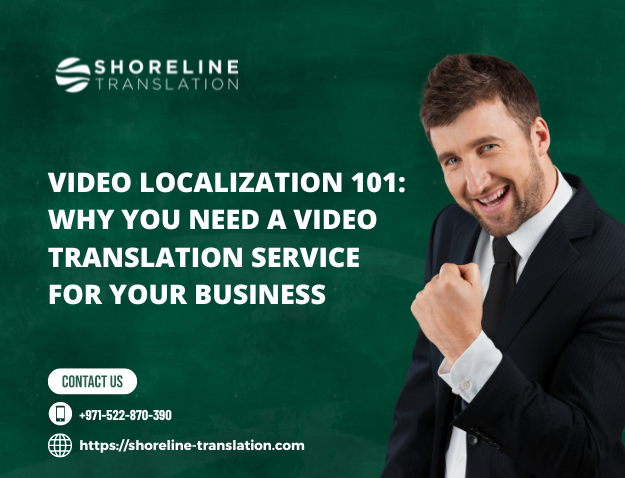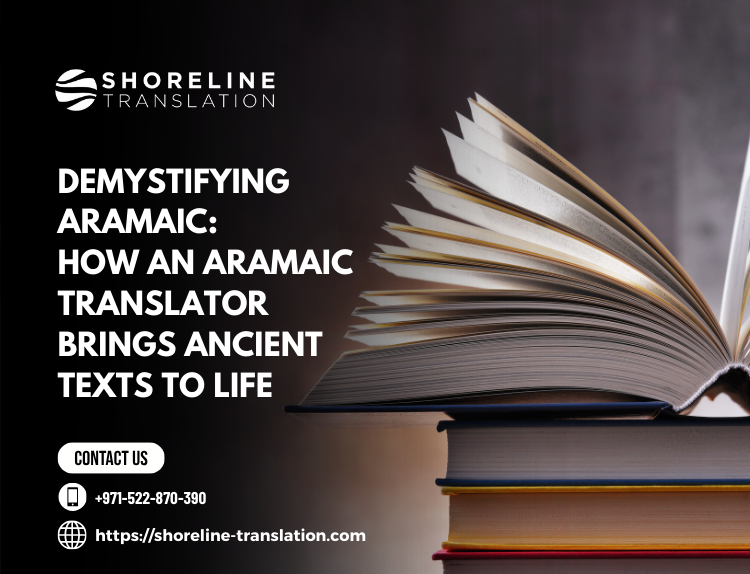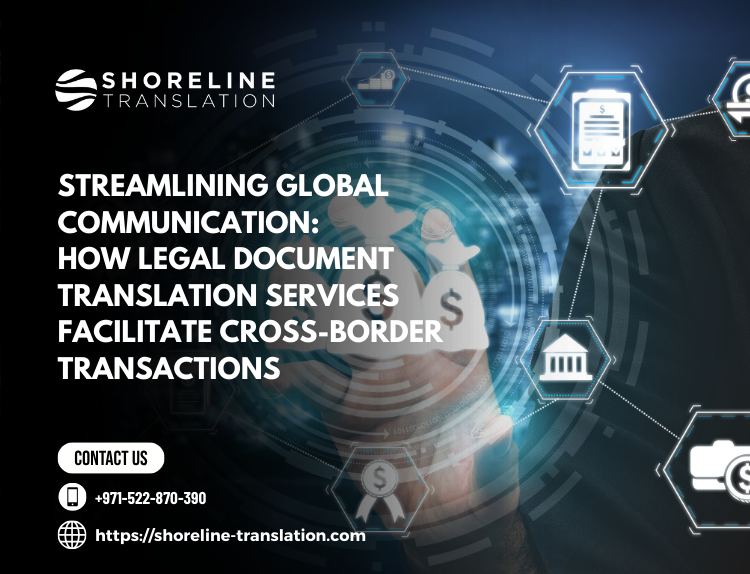Table of Contents
ToggleVideo Localization 101: Why You Need a Video Translation Service for Your Business
Are you looking to take your business to new heights and expand your global reach? If so, then video localization is the key to unlocking a world of opportunities. In today’s digital age, where videos dominate online platforms, businesses must adapt and cater their content to different languages and cultures. This is where video translation services come into play.
Imagine being able to effectively communicate with audiences around the globe, breaking language barriers, and ensuring that your message resonates with everyone. Video localization allows you to do just that. By translating and adapting your videos for different markets, you can engage international viewers on a whole new level.
In this blog post, we’ll explore why video localization is essential for businesses in today’s interconnected world. We’ll dive into the benefits it offers, the various types of video localization services available, how it works, factors to consider for high-quality localization, output formats for localized videos, accessibility considerations, real-life case studies of companies using video localization successfully…and much more!
So grab a seat and get ready to discover how harnessing the power of video translation services can propel your business toward global success!

Benefits of Video Localization
Video localization offers numerous benefits for businesses looking to expand their global reach. It allows companies to effectively communicate with audiences from different cultures and languages, breaking down language barriers and ensuring that their message is understood. By translating videos into the native language of target markets, businesses can connect with customers on a deeper level, building trust and loyalty.
Video localization enhances engagement and user experience. When viewers can watch videos in their language or with subtitles that they understand, they are more likely to stay engaged and absorb the information being presented. This leads to increased viewer retention rates and higher conversion rates as viewers are more likely to take action after watching a localized video.
Types of Video Localization Services
When it comes to video localization, there are various types of services available that can cater to your specific needs. One popular option is dubbing, where the original audio is replaced with a translated version in the target language. This allows viewers to hear the dialogue in their native tongue without losing the visual context.
Another common type of video localization service is subtitling. With this method, translated text appears at the bottom of the screen while allowing viewers to still hear the original audio. It’s an effective way to ensure comprehension for both foreign and local audiences.
Additionally, translation services provide a direct written translation of all spoken content in a video. This allows viewers who may not understand the source language to read and follow along with ease. Other types include UN-style translations (with captions displayed on-screen), lip-syncing (matching mouth movements with translated dialogue), non-SDH translations (for accessibility purposes), and live translations for real-time events or broadcasts.
In conclusion: There are several types of video localization services available depending on your specific requirements – from dubbing and subtitling to translation, UN-style captions, lip-syncing, non-SDH options, or even live translations for real-time events or broadcasts. Each approach has its benefits and considerations when it comes to reaching global audiences effectively
Dubbing
Dubbing is a popular method of video localization that involves replacing the original audio with a translated version in another language. It is commonly used for movies, TV shows, and other types of video content.
In dubbing, professional voice actors are hired to re-record the dialogue in sync with the lip movements of the original characters. This ensures that the audience can enjoy the video without having to read subtitles or understand the original language. Dubbing allows businesses to reach a wider global audience and make their videos more accessible and engaging across different cultures and languages.
With dubbing, you can seamlessly convey your message to international viewers while maintaining visual continuity. This method eliminates language barriers and provides an immersive experience for your target audience, making it an essential tool for businesses looking to expand their reach globally through effective video translation services.
Subtitling
Subtitling is a popular method of video localization that involves displaying translated text on the screen while the original audio remains intact. It allows viewers to read the translated dialogue or narration in their native language, making it easier for them to understand and follow along.
In addition to providing accessibility for people who are deaf or hard of hearing, subtitling also benefits international audiences who may not fully understand the spoken language. Whether it’s a movie, TV show, promotional video, or e-learning content, adding subtitles can greatly enhance the viewing experience and ensure that your message reaches a wider audience. So if you’re looking to expand your global reach and improve customer engagement, consider incorporating subtitling into your video localization strategy.
Translation
Translation is a crucial aspect of video localization. It involves converting the original audio and text content into another language, making it accessible to a wider audience. With professional translation services, you can ensure accurate and culturally relevant translations that effectively convey your message.
When it comes to video translation services, experienced translators work closely with the original content creators to capture the essence of the message while adapting it for different languages. They carefully consider linguistic nuances and cultural sensitivities to deliver high-quality translations that resonate with viewers. By investing in professional translation services, you can expand your reach globally and connect with diverse audiences who may not have understood your content otherwise.
UN-Style
UN-Style localization is a specialized video translation service that aims to replicate the experience of watching a United Nations conference or meeting. This style involves translating spoken content in real time, providing viewers with subtitles or captions that appear on screen as the speaker speaks. UN-Style localization ensures accuracy and timeliness, allowing audiences to follow along with the conversation seamlessly.
With UN-Style localization, viewers can gain valuable insights from international conferences or meetings without language barriers hindering their understanding. The translated subtitles or captions are synchronized perfectly with the speaker’s words, ensuring an immersive and informative viewing experience. Whether it’s for diplomatic events, global summits, or educational materials related to international affairs, UN-Style video localization plays a crucial role in making content accessible and inclusive for diverse audiences worldwide.
Lip-sync
Lip-sync is a type of video localization service that focuses on matching the lip movements of the original speakers in a video with the translated dialogue. This technique ensures that the localized version appears seamless and natural as if it was originally filmed in the target language.
To achieve accurate lip-sync, professional translators, work closely with voice actors who are skilled at synchronizing their speech with the on-screen movements. They carefully adapt and time their delivery to match the lip movements of the original speakers, resulting in an authentic viewing experience for audiences.
With lip-sync localization, businesses can effectively convey their message across different markets while maintaining visual coherence. It allows them to connect with viewers on a deeper level by delivering content that feels native and relatable. So whether you’re launching an international marketing campaign or expanding your business globally, investing in lip-sync video translation services can help you break through language barriers and captivate diverse audiences.
Non-SDH
Non-SDH, or Non-Synced Dialogue Highlighting, is a type of video localization service that focuses on highlighting dialogue in videos. Unlike traditional subtitles or captions which are synced with the audio, Non-SDH provides a separate text track that highlights the spoken words.
This type of localization is particularly useful for videos where it may be difficult to follow the dialogue due to background noise, accents, or fast-paced speech. By providing a clear visual representation of the spoken words, Non-SDH ensures that viewers can easily understand and follow along with the dialogue without missing any important information. It’s an effective way to improve comprehension and accessibility for international audiences.
Live Translation
Live Translation is a powerful video localization service that allows businesses to reach their global audience in real-time. With live translation, businesses can seamlessly translate their videos into multiple languages during live events or broadcasts. This enables companies to engage with international viewers and customers on a deeper level, breaking down language barriers and fostering better communication.
During live translation, skilled interpreters simultaneously translate the spoken content of the video into different languages. These translations are then transmitted through various channels such as online streaming platforms or conference systems, ensuring that viewers can understand and connect with the video’s message regardless of their native language. Live translation offers an interactive and immersive experience for audiences worldwide, making it an invaluable tool for businesses aiming to expand their reach globally and deliver impactful content in real time.
How Video Localization Works
Video localization is the process of adapting a video’s content to suit different regions and languages. It involves translating the audio, on-screen text, and subtitles to make the video accessible to a global audience. But how does video localization work?
A professional translation team will transcribe and translate the original script or dialogue into the desired target language. This requires not only linguistic expertise but also cultural sensitivity to ensure accurate translations that resonate with local audiences. The translated script is then recorded by native-speaking voice actors who match their performance with the original timing and emotion of the video.
Next, any on-screen text or graphics are localized by replacing them with translated versions that fit seamlessly within the visual context. Subtitles may also be added for viewers who prefer reading along while watching.
Video localization is an intricate process that combines linguistic skills, attention to detail, and technical expertise to create a seamless viewing experience for audiences around the world.
Factors to Consider for High-Quality Localization
When it comes to video localization, achieving high-quality results is crucial. To ensure your videos are accurately translated and culturally adapted, there are several factors you need to consider.
Choosing a professional video translation service is essential. Look for a provider with experience in your industry and a strong track record of delivering accurate translations. They should also have native-speaking translators who understand the nuances of both languages involved.
Don’t overlook the importance of cultural adaptation. Different regions have unique preferences and sensitivities, so it’s crucial to adapt your content accordingly. Consider local customs, idioms, and visual elements that resonate with the target audience.
By considering these factors during the localization process, you can ensure that your videos effectively communicate your message while resonating with audiences around the world.
Integrations and Tools for Video Localization
When it comes to video localization, having the right integrations and tools can make all the difference. These resources streamline the process and ensure that your videos are accurately translated and localized for different markets.
One essential tool is a translation management system (TMS), which allows you to manage and track all aspects of the localization process in one central platform. This helps improve efficiency, collaboration, and quality control. Additionally, there are various video editing software programs available that offer features specifically designed for localization. These tools enable seamless integration of translated scripts or subtitles into your videos, ensuring smooth playback without compromising on visual elements.
By leveraging these integrations and tools, you can take your video localization efforts to new heights, reaching wider audiences around the globe while maintaining exceptional quality standards. Whether you’re a small business or a multinational corporation, investing in these resources will undoubtedly enhance your video localization strategy.
Output Formats for Localized Videos
When it comes to video localization, the output format is an essential consideration. After all, you want your localized videos to be accessible and compatible across various platforms and devices. Fortunately, there are several output formats available for localized videos.
One common format is MP4, which offers a good balance of quality and file size. This format works well for streaming platforms like YouTube or Vimeo. Another popular option is AVI, which provides high-quality video playback but tends to have larger file sizes. Additionally, you can consider formats like MOV or WMV depending on your specific needs.
Having the right output format ensures that your localized videos can reach a wider audience without any compatibility issues. So make sure to choose the appropriate format based on your distribution channels and target audience preferences.
Video Localization for Accessibility
Video localization goes beyond just reaching a global audience. It also plays a crucial role in making videos accessible to individuals with disabilities. By providing captions or subtitles, video translation services ensure that people who are deaf or hard of hearing can fully understand and engage with the content. Additionally, audio descriptions can be added to assist individuals who are blind or have visual impairments. This level of accessibility not only meets legal requirements but also shows your commitment to inclusivity and equal access.
Creating an inclusive viewing experience is essential, and video localization is a powerful tool to achieve that goal. By making your videos accessible through captioning, subtitling, and audio descriptions, you open up new opportunities for engagement while demonstrating your dedication to accessibility standards.
Case Studies: Companies That Use Video Localization
Video localization has become a crucial aspect of global business strategies, and many companies have embraced this trend to effectively reach their target audience. Let’s take a look at some case studies that highlight the importance of video localization in different industries.
One such company is XYZ Corp., a multinational tech giant. They recognized the need to localize their product demonstration videos for various markets around the world. By translating and dubbing their videos into multiple languages, they were able to connect with customers on a deeper level, resulting in increased product awareness and sales.
Another success story is ABC Enterprises, a fashion retailer expanding into international markets. They utilized video subtitling services to make their promotional videos accessible to people who speak different languages. This approach not only helped them overcome language barriers but also enhanced customer engagement and brand loyalty.
These are just two examples among many companies that have reaped the benefits of video localization in today’s globalized business landscape.
Getting Started with Video Localization
Getting started with video localization is an essential step in expanding your business to reach a global audience. To begin, you’ll need to identify the videos that require translation and determine which markets you want to target. Once you have this information, it’s time to find a reputable video translation service provider.
Next, collaborate with the translation team to discuss your specific requirements and goals for each localized video. They will guide you through the process of selecting the most suitable localization services, such as dubbing or subtitling, based on your content and target audience.
Remember that effective communication with your chosen video translation service is crucial at every stage of the process. Providing clear instructions and feedback will help ensure accurate translations tailored to your brand message. So get started today and unlock new opportunities by making your videos accessible worldwide!
About Shoreline Agency for video translation services
Shoreline Agency is a leading provider of video translation services, specializing in helping businesses expand their reach and connect with global audiences. With years of experience in the industry, Shoreline Agency understands the importance of accurate and culturally sensitive translations for videos.
Their team of expert linguists and translators is skilled in capturing the nuances of language while ensuring that your message remains clear and effective. They offer a range of localization services including dubbing, subtitling, translation, UN-style interpretation, lip-syncing, non-SDH captioning, and live translation. Whatever your video localization needs may be, Shoreline Agency has the expertise to deliver high-quality results.
By partnering with Shoreline Agency for your video translation needs, you can rest assured that your content will be accurately translated into multiple languages while maintaining consistency across all platforms. Their comprehensive approach to video localization ensures that every aspect – from audio synchronization to subtitle timing – is carefully executed for seamless integration.
Additional Resources and Quick Links
Looking for additional resources and quick links to help you delve deeper into the world of video localization? We’ve got you covered! Here are some valuable sources that can provide further insights and guidance on this topic.
First off, check out Shoreline Agency’s blog, where you’ll find a wealth of articles covering various aspects of video translation services. From tips on selecting the right service provider to best practices for ensuring high-quality localization, their blog is a treasure trove of knowledge.
If you’re looking for more in-depth information, industry publications such as “Localization World” and “Multilingual Magazine” offer a range of articles and case studies related to video localization. These resources can give you a broader perspective on trends, innovations, and success stories within the field.
In addition to written content, there are also online communities and forums dedicated to video localization. Websites like ProZ.com and TranslatorsCafe.com provide platforms where professionals in the industry share their expertise and engage in discussions about this rapidly growing sector.
With these additional resources at your fingertips, you’ll be well-equipped to navigate the world of video translation services with confidence! So dive in, explore these sources, and enhance your understanding of how video localization can benefit your business.
Connect with Us
We would love to hear from you! Whether you have questions about our video translation services or you’re ready to start localizing your content, we are here to help. Our team of experts is dedicated to providing top-notch service and assistance every step of the way.
You can reach out to us through our website contact form or give us a call directly. We pride ourselves on our quick response time and personalized approach, ensuring that all your inquiries are addressed promptly and efficiently. Don’t hesitate to connect with us – let’s make your videos accessible and engaging for audiences worldwide!





